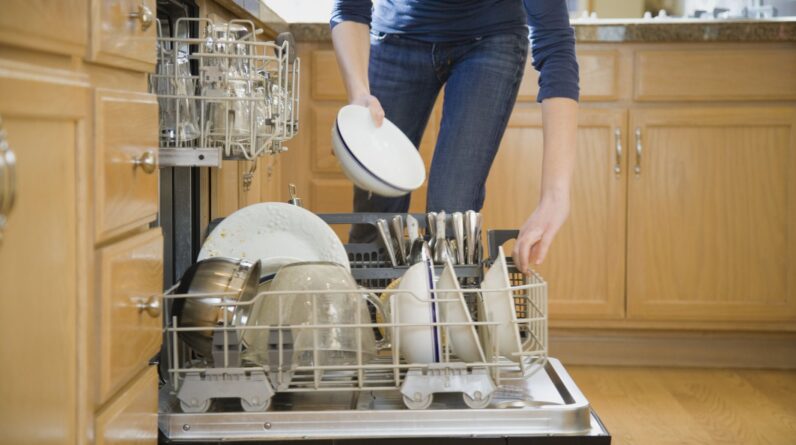
So you’ve noticed that your dishes have been coming out of the dishwasher with a strange odor or are not as squeaky clean as they used to be. Don’t worry, you’re not alone in this. Many people find themselves wondering how to tackle the task of cleaning the interior of their dishwasher. Well, fear not, because in this article, we’ll guide you through some simple yet effective steps to get your dishwasher looking and smelling fresh again. From removing stubborn food particles to eliminating funky smells, we’ve got you covered. Get ready to bring that sparkle back to your dishwasher!
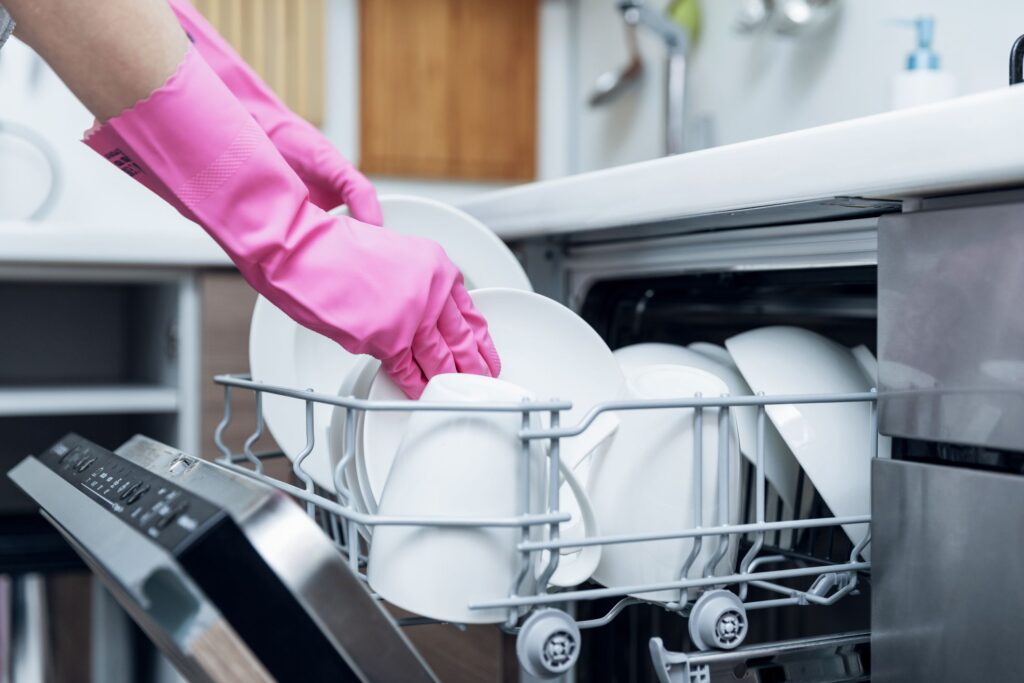
Inspecting the Dishwasher
Checking for visible debris
Before starting the cleaning process, it is important to inspect your dishwasher for any visible debris. Take a quick look inside the dishwasher to see if there is any food particles, paper, or other materials that may have been left behind from the previous load. Carefully remove any larger debris using gloves or a soft cloth to avoid injury.
Examining the filters
Filters play a crucial role in the proper functioning of your dishwasher. Over time, these filters can become clogged with debris, affecting the overall performance of your appliance. To examine the filters, locate and remove them according to the manufacturer’s instructions. Inspect them closely for any signs of blockage or damage. If you notice buildup or residue, it’s time to give them a thorough cleaning.
Inspecting the sprayer arms
The sprayer arms are responsible for distributing water throughout the dishwasher to ensure a thorough and efficient cleaning cycle. Inspecting these arms is essential to ensure they are not clogged or damaged. Gently spin the arms to check for any obstructions and visually inspect them for any signs of wear or tear. If you notice any issues, it may be necessary to clean or replace the sprayer arms for optimal performance.
Preparing the Dishwasher for Cleaning
Disconnecting the dishwasher from power
Safety should always be a priority when working with any electrical appliance. Before cleaning your dishwasher’s interior, it is crucial to disconnect it from the power source. Locate the circuit breaker panel in your home and turn off the circuit that supplies power to your dishwasher. This precautionary measure will ensure your safety throughout the cleaning process.
Removing the racks and utensil holders
To thoroughly clean the interior of your dishwasher, you will need to remove the racks and utensil holders. These components can accumulate debris and hinder the cleaning process. Carefully pull out the racks and take note of their arrangement to ensure correct placement later. If necessary, refer to your dishwasher’s user manual for specific instructions on how to remove these accessories.
Wiping away loose debris
After removing the racks and utensil holders, it’s time to tackle the loose debris that may have accumulated in the dishwasher’s interior. Use a soft cloth or sponge to gently wipe away any loose particles such as food residue, dirt, or dust. This step will provide a clean canvas for the next stage of the cleaning process.
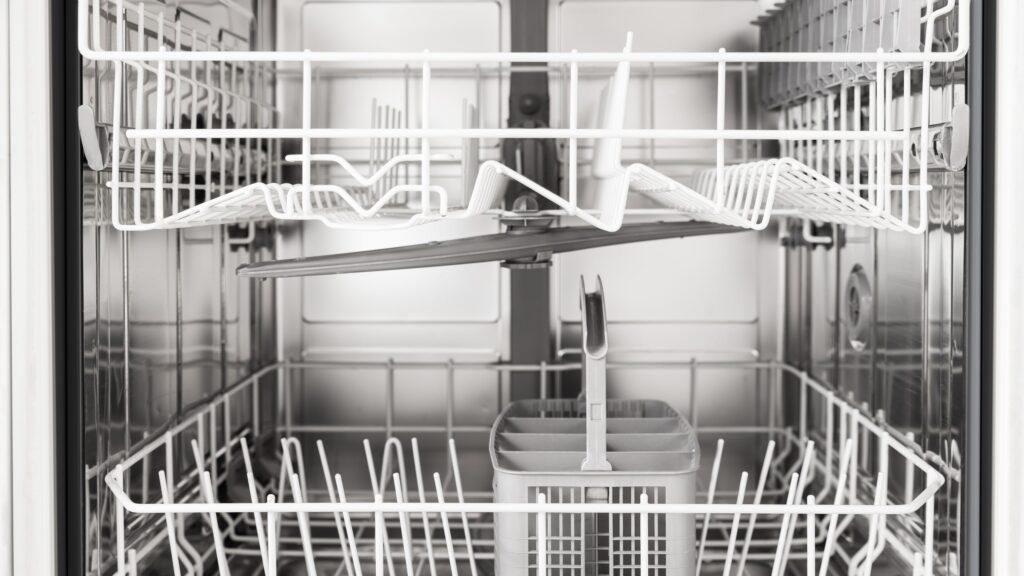
Cleaning the Interiors
Cleaning the walls and bottom
The interior walls and bottom of your dishwasher can harbor stubborn stains and residue. To effectively clean these surfaces, create a simple cleaning solution by mixing warm water with a mild detergent. Dip a sponge or cloth into the solution and gently scrub the walls and bottom of the dishwasher. Pay extra attention to any visible stains or buildup. Once you have thoroughly cleaned these areas, rinse with clean water to remove any remaining residue.
Cleaning the sprayer arms
The sprayer arms, responsible for spraying water onto the dishes, can accumulate mineral deposits or food particles over time. To clean them, carefully remove them according to the manufacturer’s instructions. Submerge them in warm water mixed with a mild detergent and use a brush or cloth to gently scrub away any debris. Rinse them thoroughly to ensure all detergent residue is removed and reattach them to the dishwasher.
Cleaning the filters
Filters are an integral part of your dishwasher’s operation, as they help to trap food particles and debris. Over time, these filters can become clogged, leading to poor dishwasher performance. To clean the filters, remove them from the dishwasher and rinse under running water to remove any loose debris. For a more thorough cleaning, soak them in warm water mixed with a mild detergent. Use a soft brush to gently scrub away any stubborn residue. Once clean, rinse thoroughly and reinstall them according to the manufacturer’s instructions.
Cleaning the Door and Seal
Wiping the door exterior
The exterior of your dishwasher’s door can accumulate fingerprints, smudges, and other stains. To keep it looking clean and presentable, use a damp cloth or sponge to wipe down the door. Start from the top and work your way down, ensuring you cover all areas. If there are any stubborn stains or residue, a mild detergent can be used to tackle them. Remember to use a non-abrasive cloth or sponge to avoid scratching the surface.
Cleaning the seal
The door seal, also known as the gasket, plays a crucial role in preventing water leakage during the dishwasher’s operation. Over time, this seal can become dirty or harbor residue, affecting its functionality. To clean the seal, use a damp cloth or sponge to wipe away any visible dirt or debris. Pay extra attention to any crevices or folds in the seal. Ensure the seal is completely dry before closing the dishwasher door to prevent the growth of mold or mildew.
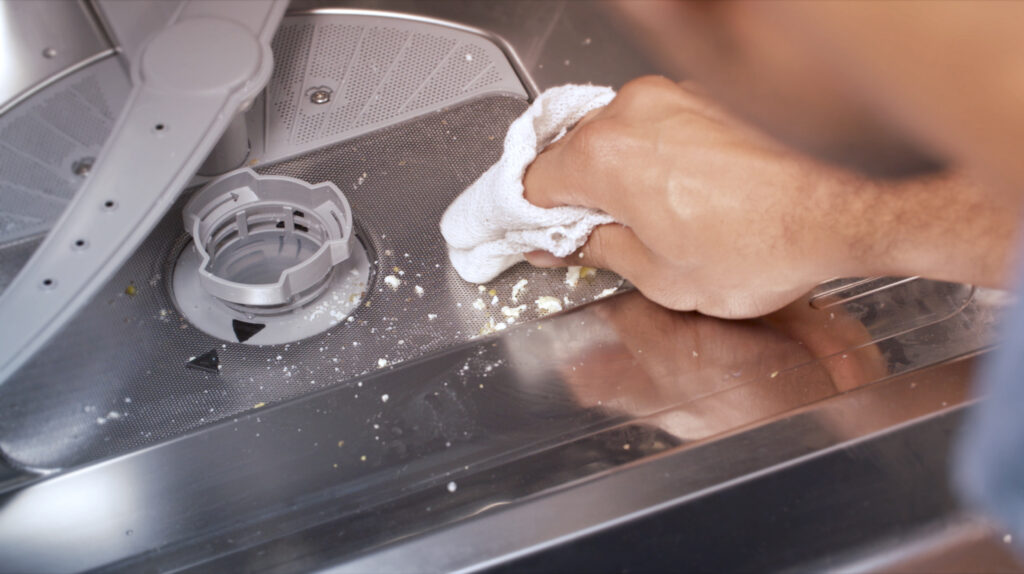
Removing Stubborn Stains or Odors
Using vinegar for mild stains or odors
Vinegar is a versatile and natural cleaning agent that can be used to tackle mild stains or odors in your dishwasher. Fill a dishwasher-safe container with white vinegar and place it on the top rack of the dishwasher. Run a hot water cycle without any dishes or detergent. The vinegar will help dissolve stubborn stains, remove odors, and leave your dishwasher smelling fresh.
Utilizing baking soda for tougher stains or odors
For tougher stains or odors, baking soda can be a powerful cleaning ally. Sprinkle baking soda on the bottom of the dishwasher and run a hot water cycle. The baking soda will act as a gentle abrasive, helping to remove stubborn stains while neutralizing any unpleasant odors. This method can be especially effective for eliminating lingering food smells.
Cleaning the Control Panel
Turning off power to the dishwasher
When cleaning the control panel of your dishwasher, it’s important to ensure it is not connected to the power source. Locate the circuit breaker panel in your home and turn off the circuit specifically designated for your dishwasher. This step will prevent any accidental button presses during the cleaning process.
Cleaning the control panel with a damp cloth
To clean the control panel, use a soft, damp cloth or sponge. Gently wipe the surface of the control panel, paying attention to any buttons or indicators. Avoid using excessive moisture to prevent any damage to the electrical components. Once cleaned, use a dry cloth to remove any remaining moisture from the control panel.
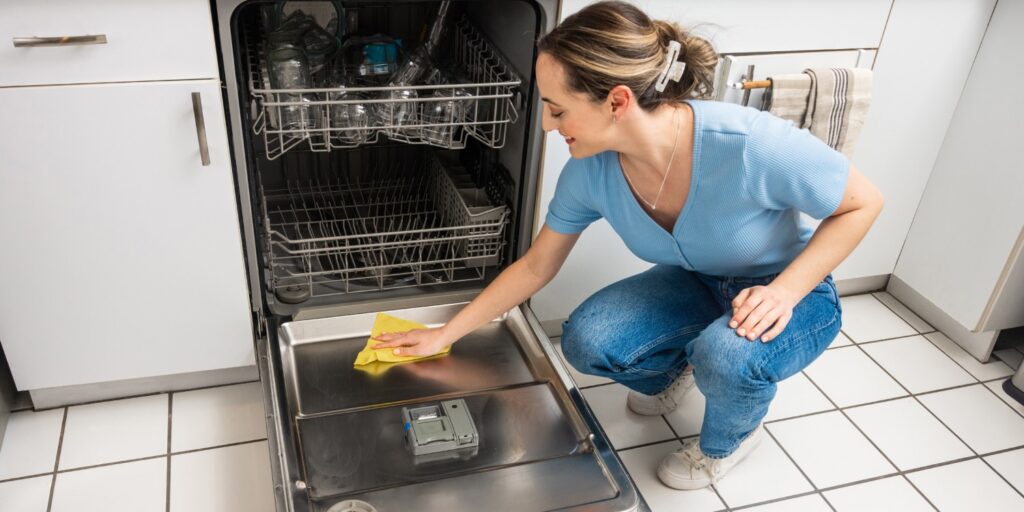
Ensuring Proper Drainage
Clearing the drain basket
The drain basket, located at the bottom of your dishwasher, captures large debris and prevents it from clogging the drain. To ensure proper drainage, remove the drain basket and rinse it under running water. Use a soft brush or toothbrush to gently scrub away any stubborn residue. Once clean, reinsert the drain basket into its place.
Running a cycle with vinegar
To further ensure proper drainage and eliminate any buildup in the drain, running a cleaning cycle with vinegar can be beneficial. Place a dishwasher-safe container filled with white vinegar on the bottom rack and run a hot water cycle. The vinegar will help dissolve any mineral deposits or debris, ensuring optimal performance and preventing clogs.
Taking care of clogged drains
If you suspect a clogged drain in your dishwasher, it is essential to address the issue promptly. Start by using a plunger to create suction and remove any minor clogs. If the problem persists, you may need to remove the drain hose and inspect it for obstructions. In severe cases, it may be necessary to call a professional plumber to resolve the issue.
Cleaning the Dishwasher Accessories
Cleaning the racks and utensil holders
To keep your dishwasher accessories functioning optimally, regular cleaning is essential. Remove the racks and utensil holders from the dishwasher and inspect them for any stains or residue. Using a mild detergent and a soft brush or sponge, scrub away any buildup or stains. Rinse them thoroughly with clean water and allow them to dry completely before reinserting them into the dishwasher.
Removing and cleaning the spray arms
The spray arms play a vital role in the dishwasher’s cleaning process, ensuring water is evenly distributed. To clean the spray arms, remove them according to the manufacturer’s instructions. Soak them in warm water mixed with a mild detergent to loosen any buildup or debris. Use a brush or cloth to gently scrub the spray arms, paying attention to the nozzles. Rinse them thoroughly and reattach them to the dishwasher.
Cleaning the filter
The dishwasher filter is designed to trap food particles and debris to prevent them from clogging the system. Regular cleaning of the filter is crucial to maintain optimal performance. Refer to your dishwasher’s user manual for specific instructions on how to remove and clean the filter. Use a soft brush or cloth and warm, soapy water to gently clean the filter. Rinse it thoroughly and ensure it is completely dry before reinstalling it.
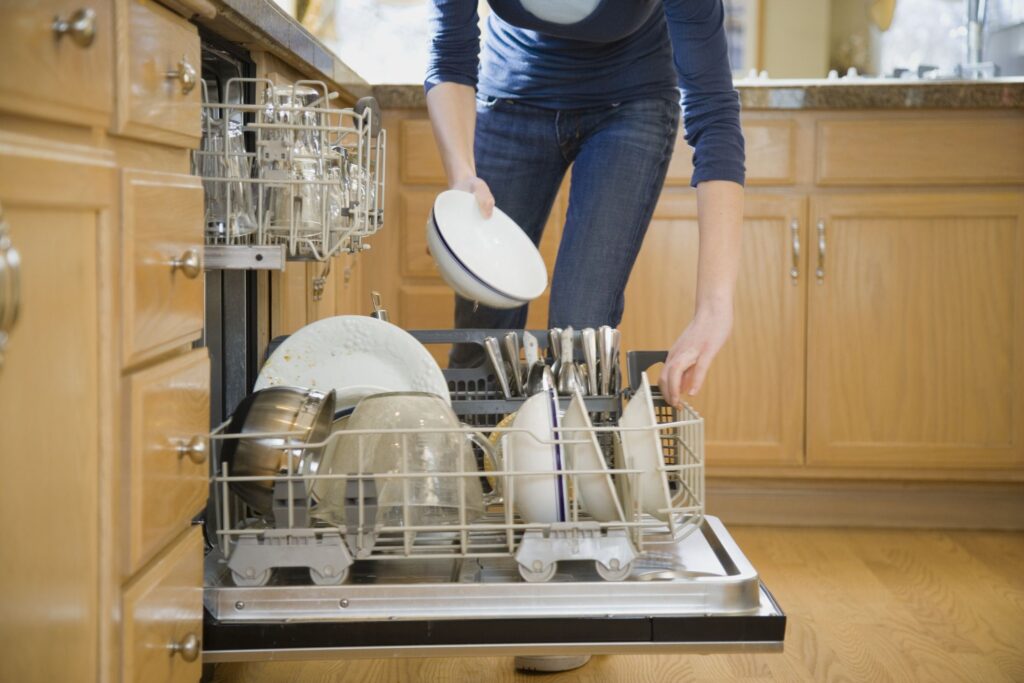
Dealing with Hard Water Deposits
Using citric acid or lemon juice
Hard water deposits can leave mineral stains and residue inside your dishwasher, affecting its efficiency. Citric acid or lemon juice can be effective in removing these hard water deposits. Fill a dishwasher-safe container with citric acid or lemon juice and place it on the bottom rack. Run a hot water cycle without any dishes or detergent. The citric acid or lemon juice will help dissolve the mineral deposits, leaving your dishwasher sparkling clean.
Running a cleaning cycle with a descaler
If hard water deposits are a recurring issue in your area, using a descaler can be an effective solution. Follow the manufacturer’s instructions to run a cleaning cycle with the descaler specifically designed for dishwashers. This will help remove any mineral buildup and prevent further deposits from affecting your dishwasher’s performance. Regular use of a descaler can prolong the lifespan of your dishwasher.
Maintaining a Clean Dishwasher
Regularly removing debris from the filter
To ensure your dishwasher continues to perform optimally, it is crucial to regularly remove debris from the filter. Clearing the filter of any trapped food particles and residue will prevent clogs and maintain the efficiency of your dishwasher. Make it a habit to clean the filter at least once a month or as recommended by the manufacturer.
Running cleaning cycles periodically
Running periodic cleaning cycles, using methods such as vinegar or baking soda, will help keep your dishwasher clean and fresh. These cycles remove any buildup or odors that may have accumulated over time. Incorporate this maintenance step on a regular basis to prolong the life of your dishwasher and maintain its performance.
Taking preventive measures
Prevention is key to maintaining a clean and efficient dishwasher. To prevent future buildup and improve the lifespan of your appliance, consider taking preventive measures. Avoid pre-rinsing dishes excessively, as this can lead to less effective cleaning and the potential for debris to accumulate. Additionally, periodically checking for visible debris and cleaning the dishwasher’s interior will help prevent clogs and maintain optimal performance.
With these comprehensive steps, you can ensure that the interior of your dishwasher remains clean and efficient. Following these guidelines regularly will not only enhance the performance of your dishwasher but also help prolong its lifespan. A clean dishwasher not only ensures spotless dishes but also provides peace of mind knowing that your appliance is functioning at its best. Happy cleaning!